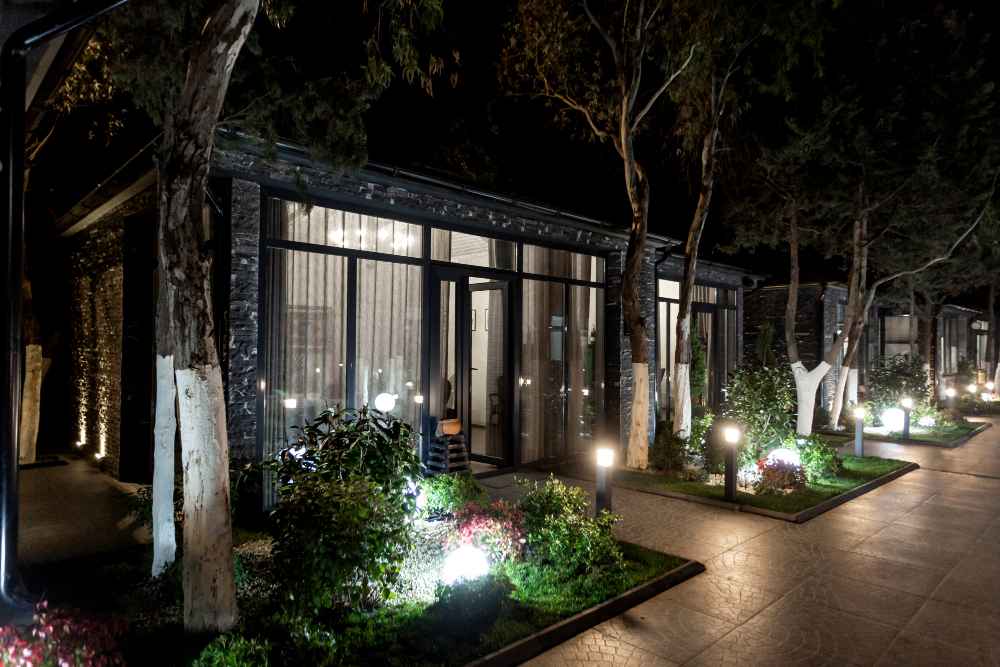Outdoor lighting is more than just a practical addition to your home—it’s a way to enhance curb appeal, improve safety, and create a welcoming ambiance for your outdoor spaces. Whether you’re looking to light up a garden path, highlight architectural features, or create a cozy patio atmosphere, installing outdoor lighting is a project that can transform your property. In this guide, we’ll walk you through the process of installing outdoor lighting, ensuring a professional and long-lasting result.
Why Install Outdoor Lighting?
Before diving into the installation process, it’s important to understand the benefits of outdoor lighting:
- Safety: Illuminates walkways, stairs, and driveways to prevent accidents.
- Security: Deters intruders by eliminating dark spots around your property.
- Aesthetics: Highlights landscaping, trees, and architectural details.
- Functionality: Extends the usability of outdoor spaces into the evening.
Step 1: Plan Your Lighting Design
The first step in installing outdoor lighting is to create a plan. Consider the following:
- Purpose: Are you lighting for safety, security, or aesthetics?
- Areas to Illuminate: Focus on pathways, entrances, patios, gardens, or water features.
- Lighting Types: Choose from spotlights, path lights, wall-mounted lights, or string lights.
- Power Source: Decide between solar-powered, low-voltage, or hardwired lighting.
Sketch a rough layout of your property and mark where you want to place each light. This will help you determine the number of fixtures and the length of wiring needed.
Step 2: Gather Your Tools and Materials
To install outdoor lighting, you’ll need:
- Outdoor-rated light fixtures
- Low-voltage transformer (for low-voltage systems)
- Weatherproof electrical cable
- Shovel or trenching tool
- Wire connectors
- Screwdrivers, pliers, and a voltage tester
- Stakes or mounts for securing lights
Step 3: Install the Transformer
For low-voltage lighting systems, a transformer is essential to reduce standard 120-volt household electricity to a safer 12 volts. Here’s how to install it:
- Choose a location near an outdoor GFCI (Ground Fault Circuit Interrupter) outlet.
- Mount the transformer on a wall or post, ensuring it’s protected from the elements.
- Connect the transformer to the power source and test it to ensure it’s working.
Step 4: Lay the Electrical Cable
Once the transformer is in place, it’s time to lay the electrical cable:
- Dig a shallow trench (about 6 inches deep) along the planned route for the lights.
- Run the cable through the trench, leaving some slack at each light location.
- Avoid sharp bends or kinks in the cable to prevent damage.
Step 5: Connect the Lights
With the cable in place, you can start connecting the light fixtures:
- Position each light fixture according to your plan.
- Strip the ends of the cable wires and connect them to the corresponding wires on the light fixture using wire connectors.
- Secure the lights in place using stakes or mounts.
Step 6: Test the System
Before burying the cable, test the entire system to ensure all lights are functioning properly:
- Turn on the transformer and check each light.
- Make adjustments to the positioning or connections if necessary.
Step 7: Bury the Cable and Finalize Installation
Once everything is working correctly, finish the installation:
- Carefully bury the cable, ensuring it’s fully covered and protected.
- Tamp down the soil to secure the cable and prevent tripping hazards.
- Arrange the lights for optimal coverage and aesthetics.
Step 8: Maintain Your Outdoor Lighting
To keep your outdoor lighting system in top condition:
- Regularly clean the fixtures to remove dirt and debris.
- Check for damaged wires or bulbs and replace them as needed.
- Adjust the positioning of lights as plants grow or landscaping changes.

Tips for a Professional Look
- Layer Your Lighting: Combine different types of lights (ambient, task, and accent) for a balanced effect.
- Use Timers or Sensors: Automate your lighting with timers or motion sensors for convenience and energy savings.
- Choose Energy-Efficient Options: LED lights are durable, long-lasting, and energy-efficient.
Conclusion
Installing outdoor lighting is a rewarding project that can significantly enhance your home’s functionality and beauty. By following this step-by-step guide, you can create a professional-looking lighting system that meets your needs and complements your outdoor space. Whether you’re a DIY enthusiast or a first-time installer, outdoor lighting is an investment that pays off in safety, security, and style.
Illuminate your nights and transform your outdoor spaces with a well-planned and expertly installed lighting system. Happy lighting!
⇒ For more ideas visit our Outdoor category.







